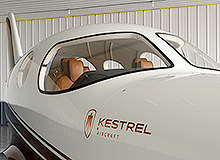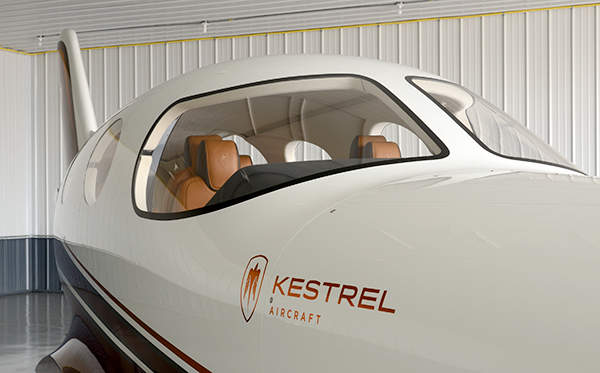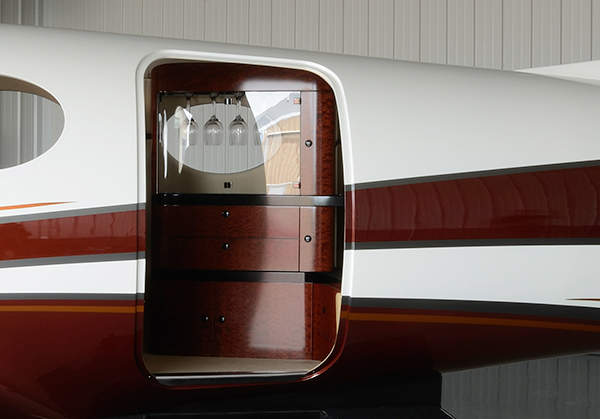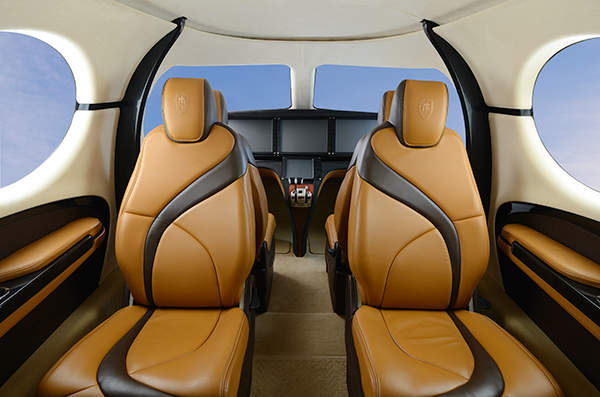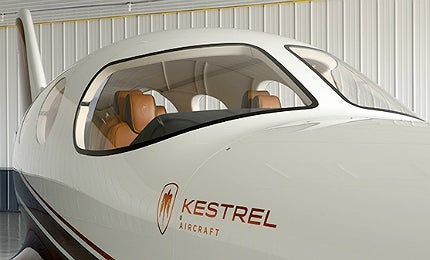
Kestrel Aircraft, based in the US, is currently developing a six to eight-seat turboprop-engine aircraft. The new aircraft will burn less fuel and will be able to land on grass and short / gravel strips. It is expected to be in service by 2016.
In July 2012, Parker Aerospace was awarded with a contract to supply main wheels, main brakes and nose wheel for the turboprop aircraft. The components will be developed by the aircraft wheel and brake division of the company.
In October 2012, Cox Company was awarded with a contract to supply electro-mechanical ice protection system for the turboprop aircraft. In the same month, LORD Corporation was selected to provide engine mount solution for the new turboprop aircraft.
In October 2012, Hartzell Propeller was contracted by Kestrel to supply four-blade propeller to the turboprop aircraft. The new aircraft will be provided with ASC-II blades built with carbon structure.
Air Comm Corporation supplies the air conditioning equipment and environmental control systems for the aircraft. The landing gear for the aircraft will be provided by Triumph Structures Kansas City.
F1C3 prototype-based design
The new Kestrel turboprop aircraft is being developed at Kestrel’s centres located in Superior and Brunswick, US. Its design will be based on the F1C3 prototype, which was developed by Farnborough Aircraft in 2006.
The aircraft will be constructed with all composite materials. It will have large windows, a large door and wide aisles. The interior of the aircraft will feature more space decorated with natural materials.
Features of the aircraft’s cockpit
The cockpit of the aircraft will feature an instrument panel with avionics and sidestick controls. The flight deck will offer high visibility with well-designed ergonomics. It will be equipped with customised avionics, which will include one intuitive panel.
The pilot will be able to get acquainted with the aircraft systems, weather conditions, configurations of the aircraft, approach charts and flight planning information.
Design of the Kestrel’s cabin
The cabin of the aircraft will be an advanced composite structure. It will provide executive seating for six to eight passengers.
It will feature executive interiors with shining wood veneers, upscale leathers, a wide aisle and oversized oval cabin windows.
The materials which will be used for the interior of the cabin will include upscale Alcantara leathers and exotic African woods.
The contract to design the interior of the aircraft cabin was awarded to Ray Mattison.
A cabin management system (CMS) and environmental control system (ECS) will be installed in the aircraft.
Kestrel JP10 turboprop engine details
The aircraft will be fitted with the Honeywell TPE331-14GR engine developed by Honeywell Aerospace. It will have an aluminium structure with two centrifugal compressors and cooled turbine blades. It will have two batteries including one lithium-ion battery. The power output will be 1,759thp, which will be flat-rated to 1,000shp. The Time between Overhaul (TBO) will be more than 5,000 hours.
Landing gear and aircraft performance
The aircraft will be fitted with a trailing-link type landing gear and oversized tires, which will ensure smooth landing on unpaved and short strips.
The aircraft will have a maximum cruise speed of 593km/h (320kt). Its maximum operating altitude will be 9,449m (31,000ft). It will require a minimum runway length of 762m (2,500ft) for takeoff.
The aircraft will have takeoff weight of about 3,856kg (8,500lbs) and empty weight of about 2,359kg (5,200lbs). It will have a maximum usable fuel of 976kg.
Related content
Xian MA60 Turboprop Airliner, China
MA60 is a twin-engine passenger airliner designed and manufactured by Xi’an Aircraft Industrial Corporation (XAIC) of China for short and domestic air routes.
Pilatus PC-12 Single-Turboprop Executive Aircraft, Switzerland
The Pilatus PC-12 is a corporate commuter and utility turboprop aircraft. The aircraft’s first flight was in 1991.

